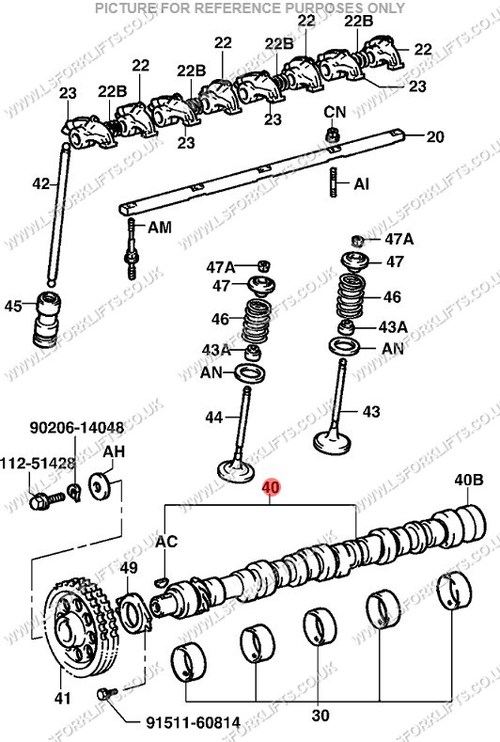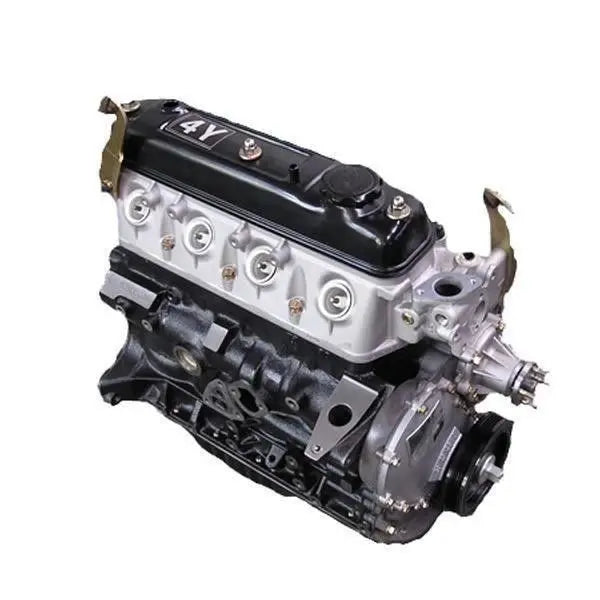Understanding the Mechanics Behind the 4Y Engine’s Power and Durability
Understanding the Mechanics Behind the 4Y Engine’s Power and Durability
Blog Article
Exploring the Various Kinds of Engine: Which One Fits Your Needs?
Interior burning engines continue to dominate due to their integrity, while electric engines are gaining grip for their sustainability. Crossbreed engines use a functional concession, and diesel engines stand out for their power in requiring applications.

Inner Burning Engines
Interior burning engines (ICEs) are the foundation of modern-day transportation, powering a vast range of automobiles from cars and trucks to airplanes. These engines operate the principle of converting fuel right into mechanical energy with a series of regulated explosions within a burning chamber. The most typical kinds of ICEs consist of fuel engines, diesel motor, and rotating engines, each created to fulfill certain performance and efficiency needs.
Gasoline engines generally use spark ignition, while diesel motor depend on compression ignition, causing distinctive distinctions in gas efficiency and power output (4y engine). Rotating engines, or Wankel engines, offer a compact design and smooth operation, but are less commonly used in mainstream applications
ICEs have gone through substantial improvements in innovation, consisting of the intro of turbocharging and gas injection systems, which improve general efficiency and performance. Despite their performance renovations, ICEs deal with boosting scrutiny due to their ecological impact, particularly pertaining to greenhouse gas emissions.
Electric Engines
As worries regarding ecological sustainability and fossil fuel dependency grow, electric engines have become an engaging alternative to internal combustion engines. These engines use electrical motors powered by batteries or fuel cells, offering a cleaner and much more reliable motive powers.
One of the key advantages of electrical engines is their minimized emissions. Unlike conventional engines that burn fossil fuels, electrical engines generate zero tailpipe discharges, substantially reducing air contamination and adding to enhanced public health. Additionally, the performance of electrical motors frequently exceeds that of interior combustion engines, converting a greater proportion of power from the source of power into usable energy for motion.
Electric engines are also noteworthy for their peaceful procedure, making them optimal for urban atmospheres. 4y engine. The simpleness of their layout leads to less moving parts, which can cause lowered maintenance costs and enhanced dependability in time
However, obstacles stay, consisting of battery manufacturing influences, charging facilities, and array constraints. Regardless of these obstacles, the expanding financial investment in electric lorry innovation and renewable energy sources points towards a promising future for electric engines, placed to play a crucial function in the change towards sustainable transport.
Crossbreed Engines
Blending the advantages of both traditional and electric inner combustion engines, hybrid engines stand for a versatile option in the mission for efficient and sustainable transport. These engines combine a fuel or diesel engine with an electric motor, allowing for boosted gas efficiency and reduced emissions compared to traditional vehicles.
Hybrid engines run in numerous modes, using the electrical motor for low-speed driving and the internal burning engine for greater rates or when even more power is needed. This dynamic procedure not only boosts fuel economic climate but also adds to a smoother driving experience. Regenerative stopping is one more crucial function, catching energy typically shed her comment is here throughout braking and rerouting it to recharge the battery.

As consumers significantly focus on my sources eco-friendliness, hybrid engines stand apart as a useful choice, using a reliable equilibrium of efficiency, performance, and ecological obligation. This flexibility makes them suitable for city travelling and long-distance traveling alike.
Diesel Engines
Efficiency and power are characteristics of diesel engines, which have long been favored for their effectiveness and gas economy. These engines operate on the concept of compression ignition, where air is compressed to a heat prior to gas is infused, igniting it without the requirement for ignition system. This process makes it possible for diesel motor to achieve greater thermal efficiency contrasted to fuel engines, converting into better fuel mileage and reduced carbon dioxide exhausts.
Diesel engines are specifically well-suited for heavy-duty applications such as trucks, buses, and industrial machinery, where torque and toughness are paramount. Their style usually consists of more powerful elements to stand up to the greater pressures produced during operation, leading to longer life span and reduced upkeep expenses.

Alternate Fuel Engines
While diesel engines have lengthy controlled the landscape of sturdy source of power, alternative gas engines are gaining grip as viable alternatives for a much more lasting future. These engines use a selection of fuels, such as pressed gas (CNG), ethanol, hydrogen, and propane, intending to decrease greenhouse gas emissions and dependence on nonrenewable fuel sources.
One substantial advantage of alternate gas engines is their possible to reduced carbon footprints. CNG engines produce less pollutants compared to conventional diesel engines, making them appropriate for city transit systems and fleets looking for to boost air quality. Ethanol, derived from biomass, not just minimizes emissions but additionally supports agricultural economies.
Hydrogen fuel cells represent a sophisticated advancement in this world, supplying zero-emission power with a chain reaction between hydrogen and oxygen. Difficulties such as facilities advancement and production expenses remain challenges to widespread fostering.
Final Thought
Interior burning engines supply integrity, while electric engines prioritize sustainability and decreased upkeep. Crossbreed engines integrate the advantages of both, boosting effectiveness, whereas diesel engines supply superior power and torque for sturdy applications.
Crossbreed engines offer a flexible concession, and diesel engines stand out for their power in demanding applications. The most common kinds of ICEs include gas engines, diesel engines, and rotating engines, each created to satisfy certain performance and effectiveness demands.
Unlike typical engines that shed fossil gas, electric engines generate no tailpipe discharges, considerably lowering air contamination and contributing to improved public wellness.Hybrid engines operate in numerous settings, making use of the electrical motor for low-speed driving and the inner burning engine for greater speeds or when even more power is needed. Crossbreed engines combine the advantages of both, improving effectiveness, whereas diesel engines give superior power and torque for durable applications.
Report this page